Mining Business Unit: Special Roundtable
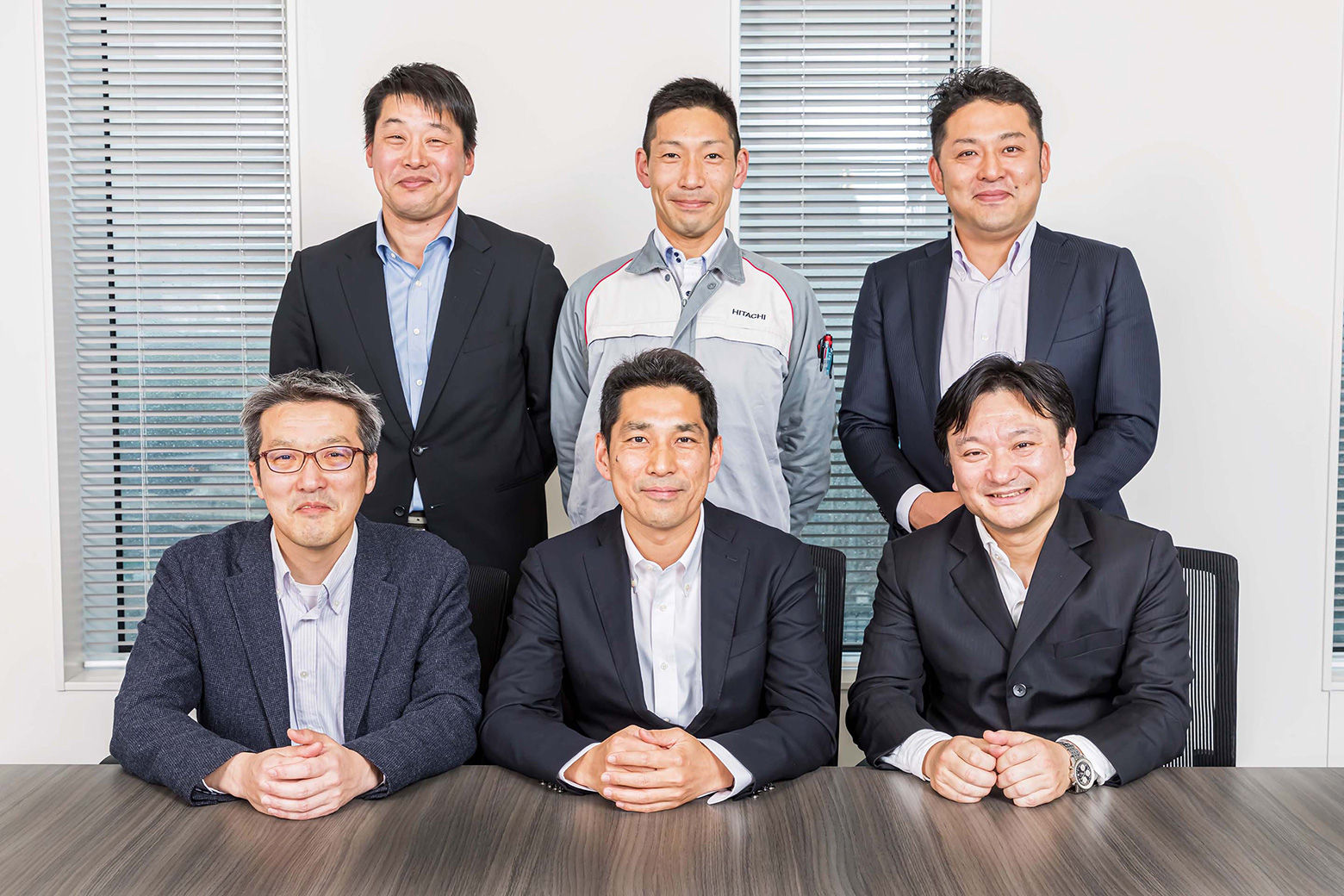
Solutions that Address Issues Faced by Customers
“Delivering innovative solutions for customer needs” is one of the pillars of Hitachi Construction Machinery’s Medium-term Management Plan. We sat down with members of the Mining Business Unit to learn more.
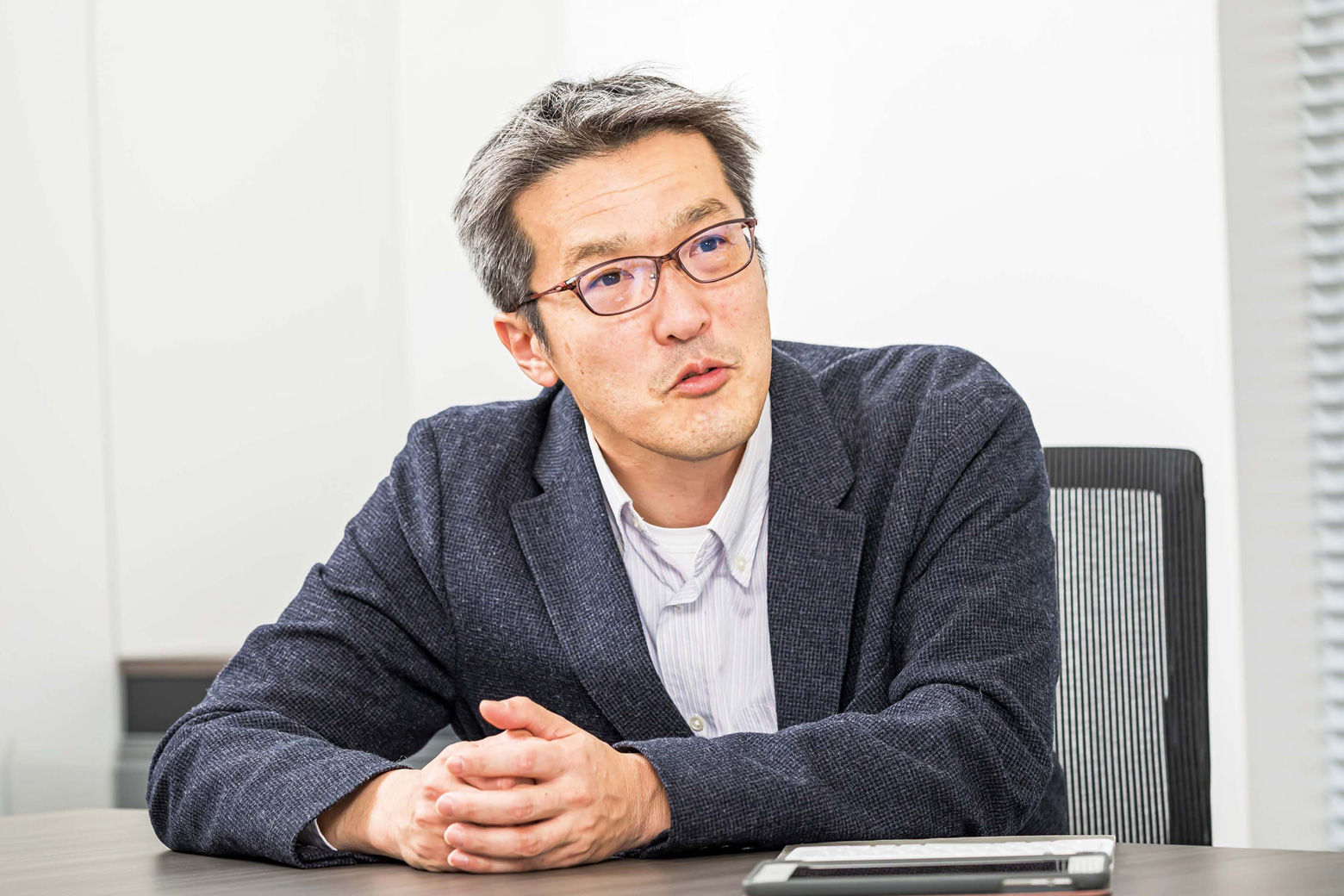
Nobuyoshi Hirowatari
Manager
AHS Support Sec.
AHS Solution Promotion Dept.
Digital Solution Promotion Div.
Mining Business Unit
We want to build on our achievements with AHS and drive our solutions forward.
Nobuyoshi Hirowatari joined the company in 1998. After working in excavator design, he worked with a Hitachi, Ltd. research laboratory on digital-based development in areas such as mining machinery failure prediction. Hirowatari also spent three years at Hitachi Construction Machinery subsidiary Wenco in Canada. After returning to Japan, he has been involved in AHS solution development, local support in Australia and the establishment of support teams.
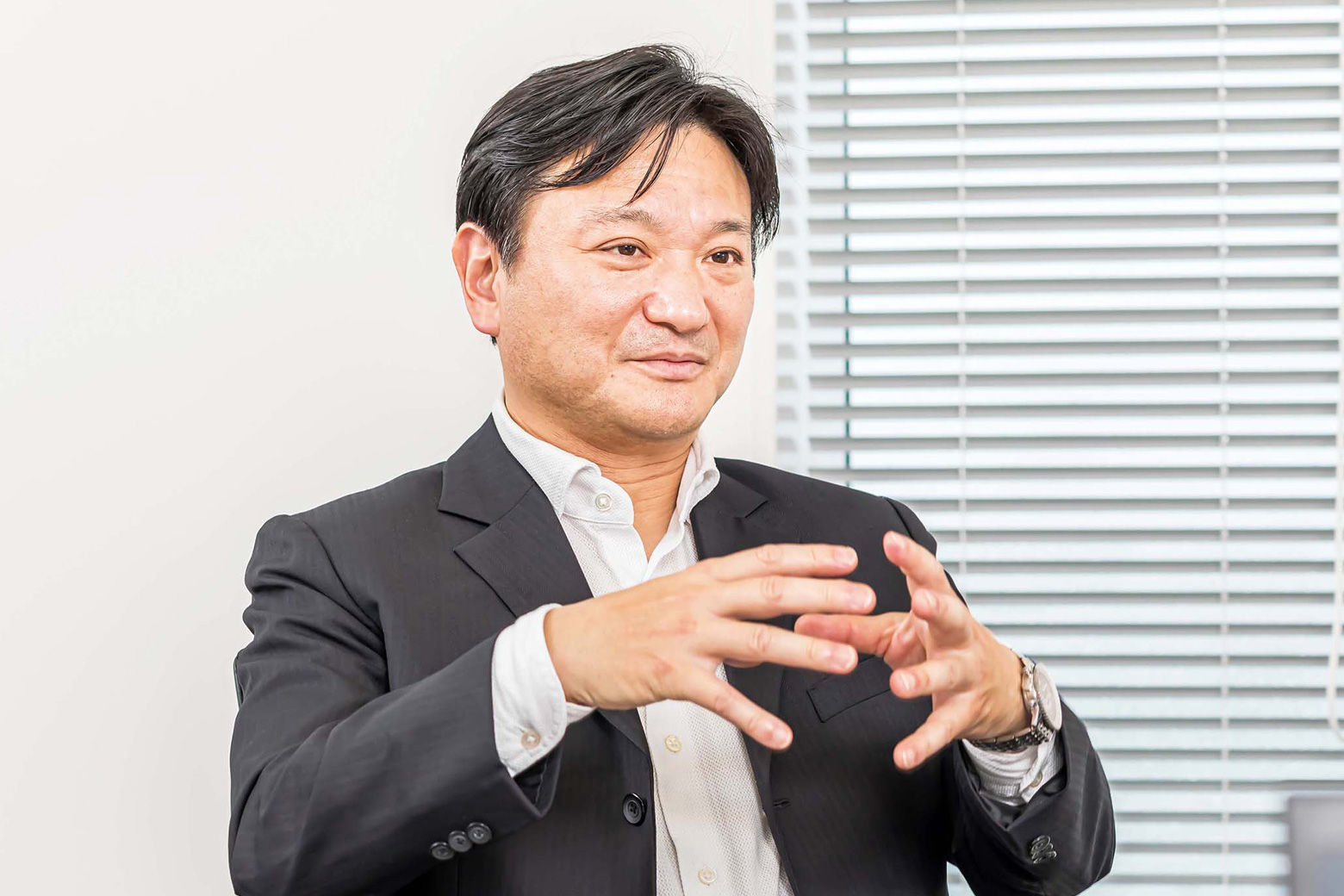
Naoto Sannomiya
Manager
Business Development Dept.
Mining Sales and Service Div.
Mining Business Unit
The Business Unit System encourages a culture of openness that will make it easier to spread the reach of our dreams.
Naoto Sannomiya joined the company in 1998. After working as an engineer in the Mining Equipment Design Department, he went on to take part in technical marketing support to provide applicational solutions based on the customer's operation. After the secondment in Singapore for a product support role, Sannomiya was assigned to technical sales for Australia and supported various sales initiatives such as expanding dump truck sales from a technical point of view. He currently works in the regional business development as part of the mining sales.
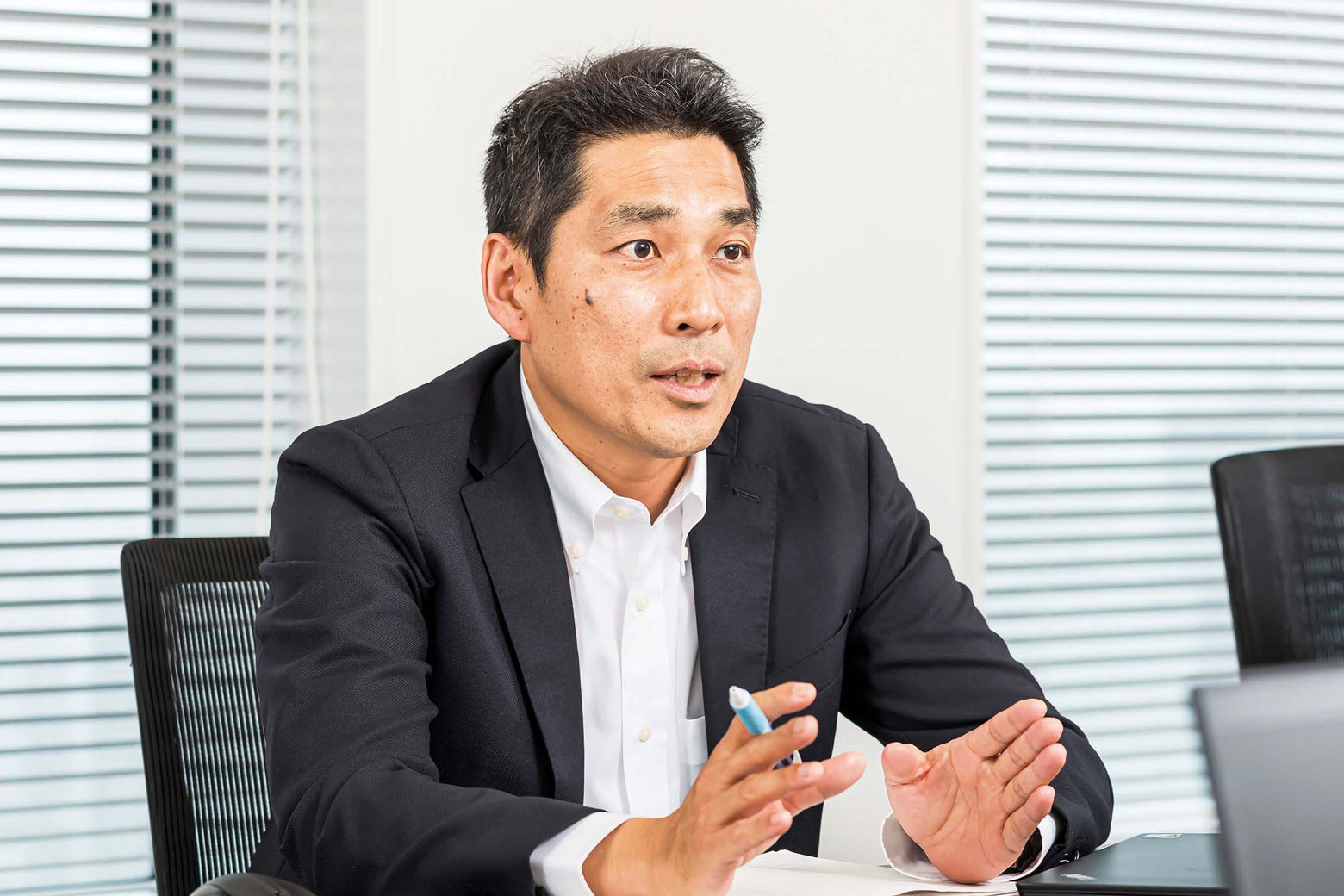
Takashi Yamashita
Manager
Operation Monitoring Sec.
Product Support Dept.
Mining Sales and Service Div.
Mining Business Unit
We want to use digital technology to give customers support that lets them use our machinery for longer.
Takashi Yamashita joined the company in 1999. He has consistently been engaged in product support, and has experience working as a point of contact covering product improvement and mining-related technical support. After working in the United States from 2002 to 2007, Yamashita entered mining product support upon his return to Japan. Following another secondment overseas, in Malaysia between 2011 and 2012, he went on to work in data utilization, covering projects such as ConSite Mine.
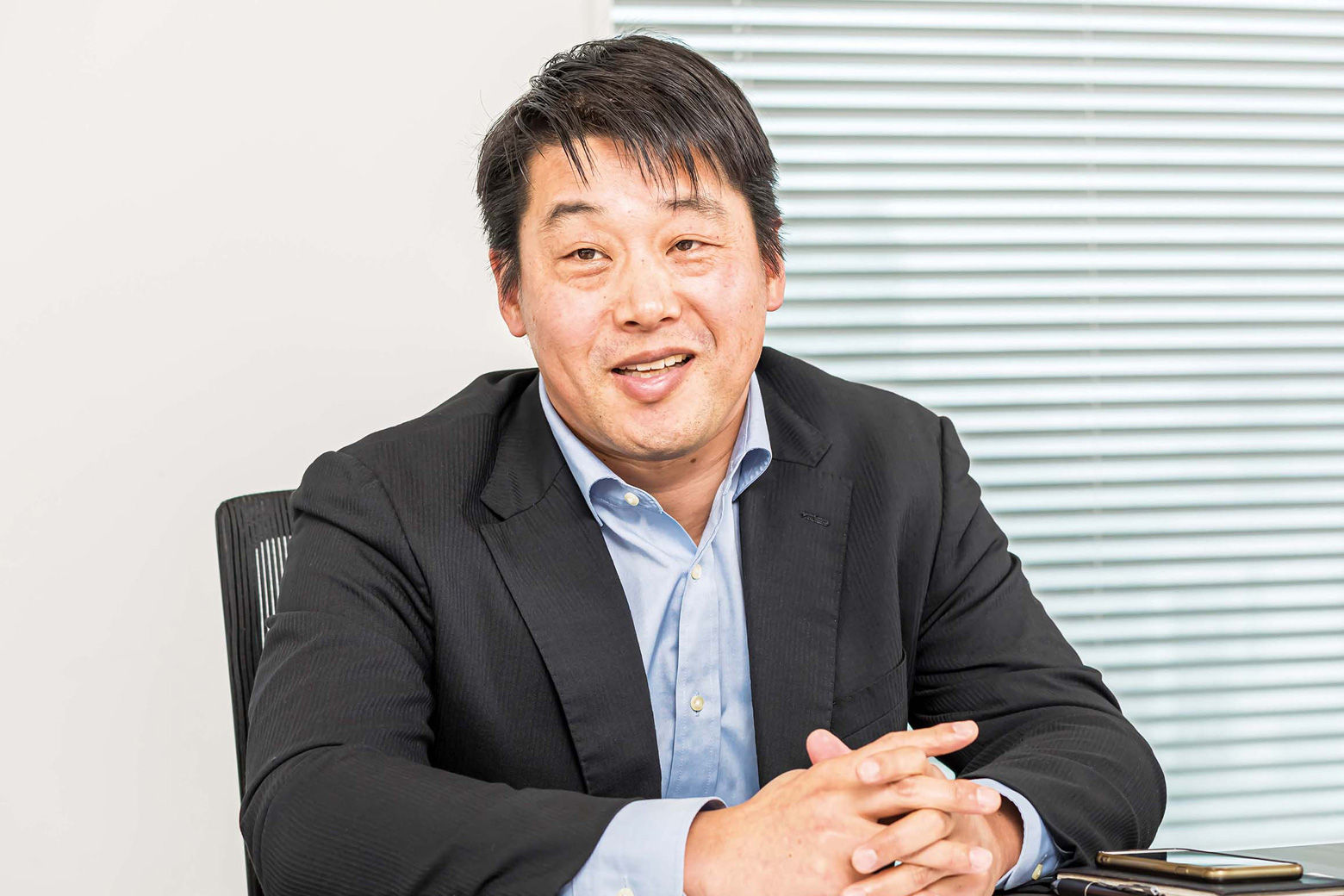
Hideaki Ito
Senior Engineer
Digital Mining Solution Sec.
Innovation Technology Development Dept.
Mining Development and Production Div.
Mining Business Unit
We want to expand our business in areas that can contribute to the realization of a prosperous society.
Hideaki Ito joined the company in 1999. After working in hydraulic valve design, he was put in charge of hydraulic system design for excavators and coordinating the development of the EX2000-7. He moved to the Innovation Technology Development Department in 2020, where he oversees ConSite Mine and the development of remote control and automation system for excavators.

Yusuke Itoga
Section Manager
Welding Sec.
Rinko Production Dept.
Mining Development and Production Div.
Mining Business Unit
Making products that make customers happy means making products that match their needs.
Yusuke Itoga joined the company in 2007 and has worked on production technology for large machinery. In 2011, he moved from the Tsuchiura Works to the Hitachinaka-Rinko Works, where he worked on ultra-large excavators. Itoga was assigned to work in Indonesia in 2016, worked as a person in charge of production engineering at Hitachi Construction Machinery Indonesia. He returned to Japan in 2022. He currently holds a managerial role at the Hitachinaka-Rinko Works.

Atsushi Ito
Manager
Business Strategy Dept.
Mining Business Unit
We are expanding the options we offer through our services to better support our customers.
Atsushi Ito joined the company in 2007. He started in product support before moving to servicing. Ito worked on excavators in Indonesia from 2012 to 2015. He started working in the parts and service business in 2019. He provides solutions in collaboration with Bradken and H-E Parts, striving to create synergies within Hitachi Construction Machinery Group.
―How do you implement awareness of solutions and customer needs in your work?
Nobuyoshi Hirowatari (NH): While Hitachi Construction Machinery Co., Ltd. provides a wide variety of mining solutions, the Automated Haulage System (AHS) is one of our most pioneering projects. There is always a gap between the customer’s ideal and the specifications and functions of any product. That’s why, even after delivery, we continue our conversation with customers to propose solutions to solve any issues they are facing. Putting this into practice epitomizes the concept of being a solutions provider that contributes to the success of society and mining customers, which is part of the aims of our Medium-term Management Plan, and I feel that in the work I do every day.
Naoto Sannomiya (NS): The practice of engaging in dialogue with customers to identify their wants and needs, then making proposals starts from the sales stage. This has long been the case, and will continue to be true in the future. Moreover, early visualization of the requirements determined through the voice of customers and inputs from dealers, identifying the types of machines required at what timing, and share such information with the manufacturing to meet the customer’s timeline will be the critical requirement moving forward.
Takashi Yamashita (TY): In product support, “To increase customers’ equipment uptime” is always top of mind. When a problem occurs, we investigate the cause, obtain technical countermeasures from related departments depending on the situation, and respond to customers. Therefore, it is a major premise to be close to the customer's complaints and concerns and respond sincerely. In the future, I believe that we are a solution provider that customers want to respond to more quickly by utilizing digital technologies such as machine monitoring and communication system between customers to collect their feedback.
Hideaki Ito (HI): Development and design teams are responsible for providing the technology and tools that make a solution-based business possible. Innovation means finding solutions that resolve issues for customers with well-defined needs, but also supporting those whose situation is less clear. In that sense, I can foresee an approach to technology development based on using new technologies to test hypotheses.
Yusuke Itoga (YI): Manufacturing products that will make our customers happy is central to the work of our manufacturing sites. Manufacturing mining machinery takes long time, and shortening manufacturing lead times is one way we could more closely align with our customers’ needs.
Atsushi Ito (AI): My division's role is to increase the number of options available to customers. When selling new machinery, for example, by offering buckets from Bradken Pty Ltd, which supplies consumable parts at group companies, in addition to genuine Hitachi Construction Machinery buckets, we can present options centered on the customer’s perspective. In addition to our products, our mining customers also use mining machinery from various companies at their jobsites, and we can offer the option of repairing other companies' machinery through our partnership with H-E Parts International LLC. This type of work leads to a Customer Interest First (CIF) approach. In other words, delivering solutions for customer needs.
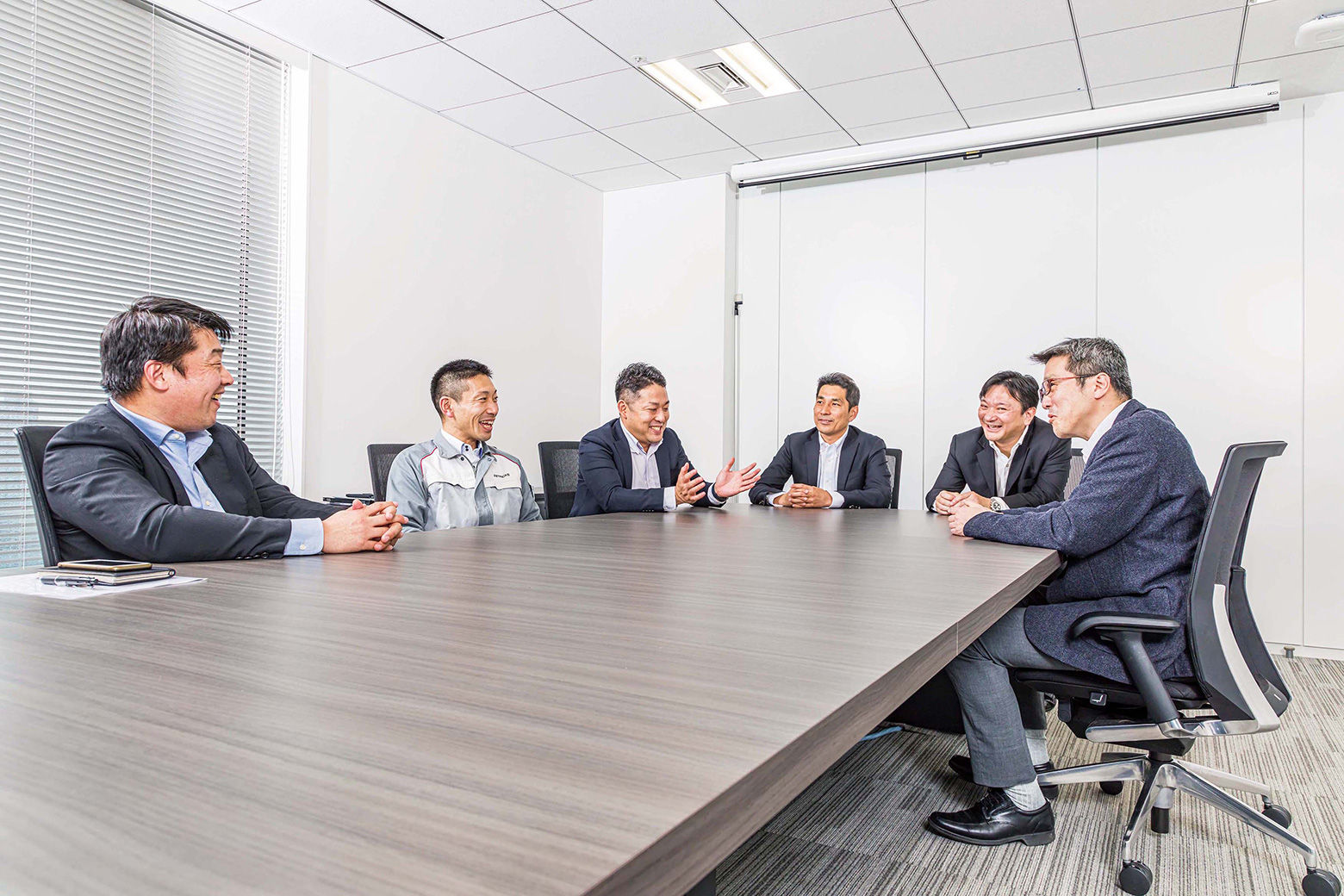
―Mr. Yamashita mentioned that digital technology will be indispensable for the future solutions business. What changes do you think are required in terms of DX and the use of digital technology?
TY: One example is the early resolution of machine problem through the use of data, which I mentioned earlier. Another example would be data utilization for preventative maintenance. Digital technology and ICT are important means of extending the machine life.
NH: We engage in information sharing and collaboration with our product support division on a daily basis in order to catch problems early and avoid any inconvenience to our customers. A system outage at a mine is just like a home losing electricity. For our customers, even a one-hour stoppage is extremely detrimental. That’s why it’s crucial that we use digital technology to prevent problems before they occur and to ensure a rapid recovery in the event that something does go wrong.
HI: In development and design, we already use frontline customer data gathered through the product support division to inform our designs. In terms of future issues relating to DX, it will be necessary to bring together three elements: development processes, platforms for efficient handling of data and talent capable of applying the latest technology, including AI and robotics.
YI: On the production division side, in addition to improving productivity, we are currently moving forward with our efforts to visualize a wide range of figures related to manufacturing throughout the production division. With regards to production progress status, enabling personnel from the sales division and production management division to give customers a timely response by quickly ascertaining the status of machinery they have taken orders will foster greater peace of mind among our customers.
The visualization of various types of manufacturing records is also crucial. While it’s already possible to access a wide range of information, traceability that ties quality records and an array of other information together will make it easier for service department personnel on site to make more concrete proposals.
NS: The visualization of manufacturing process is also extremely useful from a sales and marketing perspective. In the case of mining machinery, failures and stoppages can lead to significant losses. For that reason, customers are also interested in knowing about our manufacturing process, and we are currently offering the factory visit to see the process with their own eyes. Opening up mechanisms for visualizing the manufacturing process to customers has the potential to further improve the appeal of our machinery by enhancing the sense of reliability.
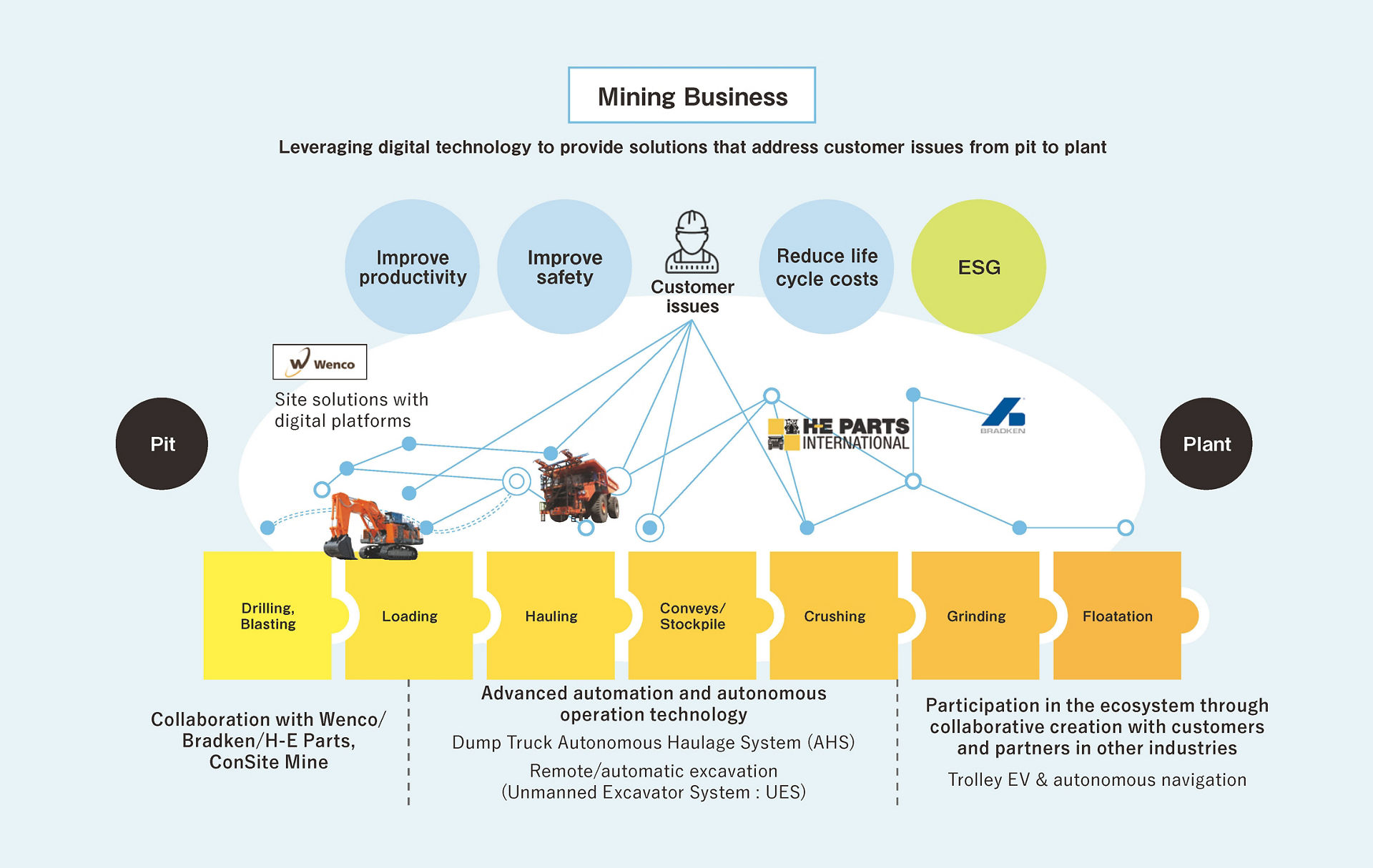
―What do you feel the benefits of introducing the Business Unit System have been?
AI: As part of the business strategy department, I am helping to implement the visualization of costs and revenue, including manufacturing costs and sales revenue. The introduction of the Business Unit System has clarified responsibilities regarding revenue and has also provided a means for identifying issues. I hope to see us generate revenue that leads to further business growth.
NH: The most significant benefit is that the support and sales teams, which had been working separately until now, can now work together as a tag team. Through the integration of business units, I expect that various initiatives will move forward with greater velocity than before.
NS: The AHS is a solution that provides a single system as a focal point for various elements, such as hydraulic excavators, dump trucks, service, support, and remote data utilization. In that sense, I think the Business Unit System will enable the mining business to push on to the next level.
HI: While digital technology improves communication, it seems inevitable that part of the personal element is lost, which has its positive aspects. We haven’t yet found the ideal balance of digital and personal aspects, but I expect the Business Unit System to help us make progress there.
Mining is a simple use case because it involves a repetitive process of digging, loading material into a dump truck, then transporting it. As a result, it’s relatively easy to define customer issues. That’s why I see mining as an area where we can best demonstrate the power of our solutions.
NS: In terms of sales and marketing, having people from product support, manufacturing, and development and design right next to each other creates a culture of openness, and it feels like we can expand our dreams more easily.
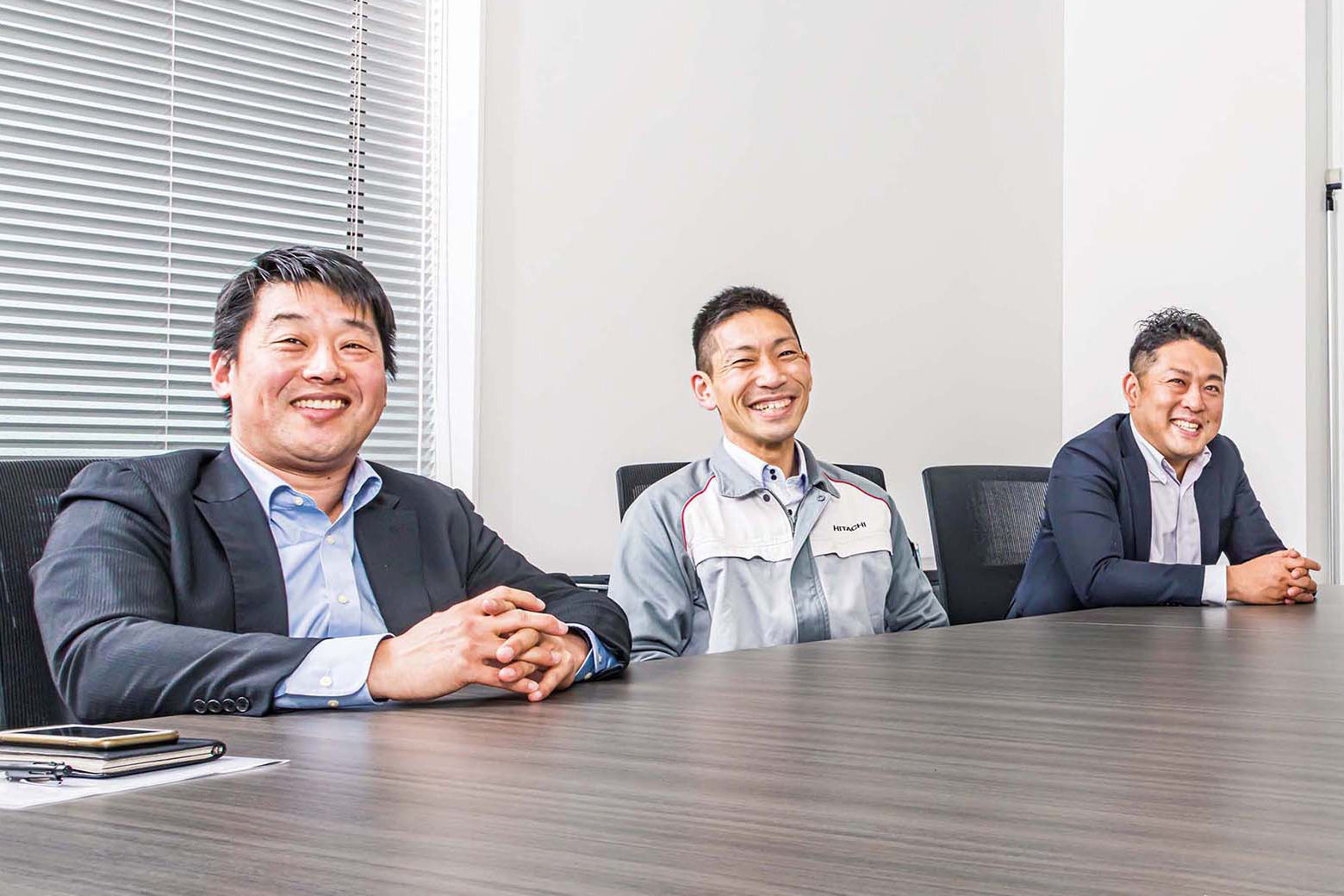
―Finally, what is your outlook for the future?
AI: I think the most important thing for future growth is to remain attentive to the world around us, have a sense of urgency, and invest in external partners in addition to the resources within the company.
YI: Factories are the birthplaces that create appealing products for customers. I hope we can continue to have a vibrant, enjoyable working atmosphere at manufacturing sites so that people can feel that sense of excitement when they use our construction machinery.
HI: Our ultimate goal as a company is to realize a prosperous society. Resources are needed to achieve this, but anomaly detection technologies and data utilization platforms can help us to minimize the extent of mining that is required and enable us to work efficiently to maintain and update infrastructure. I think there is also room for business expansion in these areas.
TY: First of all, I hope that we will be able to perform preventive maintenance and troubleshooting through remote monitoring within the next three years. I think we will then move on to focus on materials other than coal by about 2030, and I can see a path forward for us to incorporate mineral processing, which is the final stage, into our processes as a new field.
NS: Machinery we sell today will still be operating in 2030. Working in sales, we have to appeal to customers based on what will be of value to them at that point in time. Customers are interested in solutions that offer “Zero Emission” and “Zero Entry (to dangerous areas).” By leveraging data, they are also looking for methods with “Data Utilization.” If we can paint a picture of a way forward that aligns with these interests, our future as a company will also be bright.
NH: Ensuring safety is an important area. That’s another reason why our mining business is tasked with solving issues one by one as we work towards labor saving at mines. In terms of support, we also have to evolve monitoring methods by leveraging AI and other technologies moving forward.
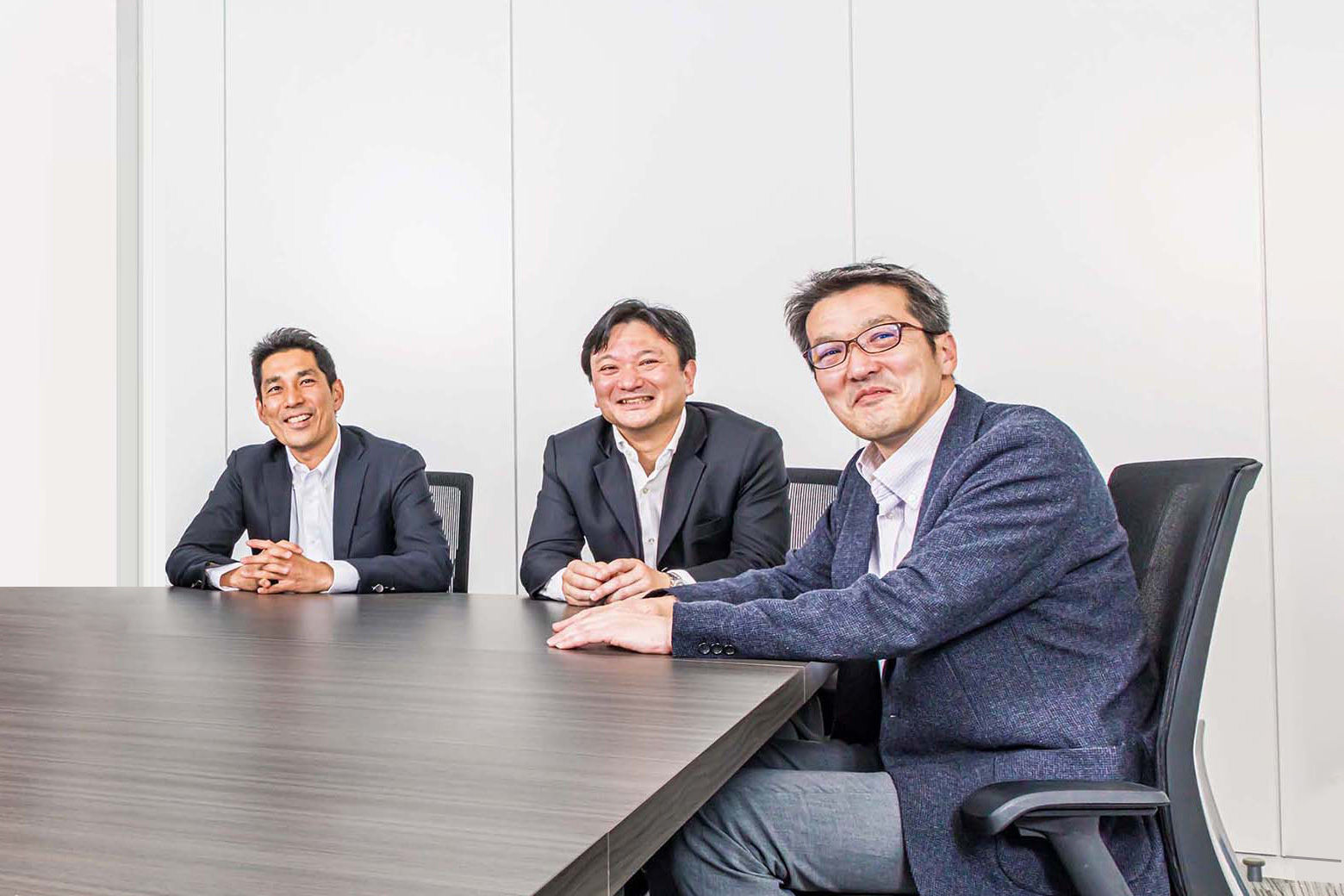
Text: Toshiaki Saito /Photos: Norio Sekine

